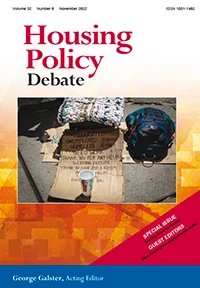Climate Change, Aging, and Well-being: How Residential Setting Matters
How do older people’s living environments influence their vulnerabilities to climate change? Much has been written about the physiological consequences of climate change for older individuals, particularly the dangers of increased incidence of severe heat. Less is known about how older people’s residential settings moderate their exposure to climate stressors, their particular sensitivities to the effects of climate change, or their capacities to respond to extreme events or adapt to long-term environmental changes. Drawing on literature in English, with a focus on work relevant to the United States, we examine how the housing, neighborhood, and urban or rural contexts in which older people live shape their experiences of climate change, moderating their exposure to risks related to climate change, sensitivity to those events and trends, and their capacities to adapt and recover. Older people face multiple life changes, making prioritizing climate readiness more challenging. They are also diverse, with different vulnerabilities and perceptions of risks and the ability to manage them. This paper lays out an agenda where additional research can inform policy and planning efforts aimed at reducing older individuals’ risk and building the capacity to adapt to climate change. The agenda includes understanding specific vulnerabilities and how older people and their housing providers are already responding.

